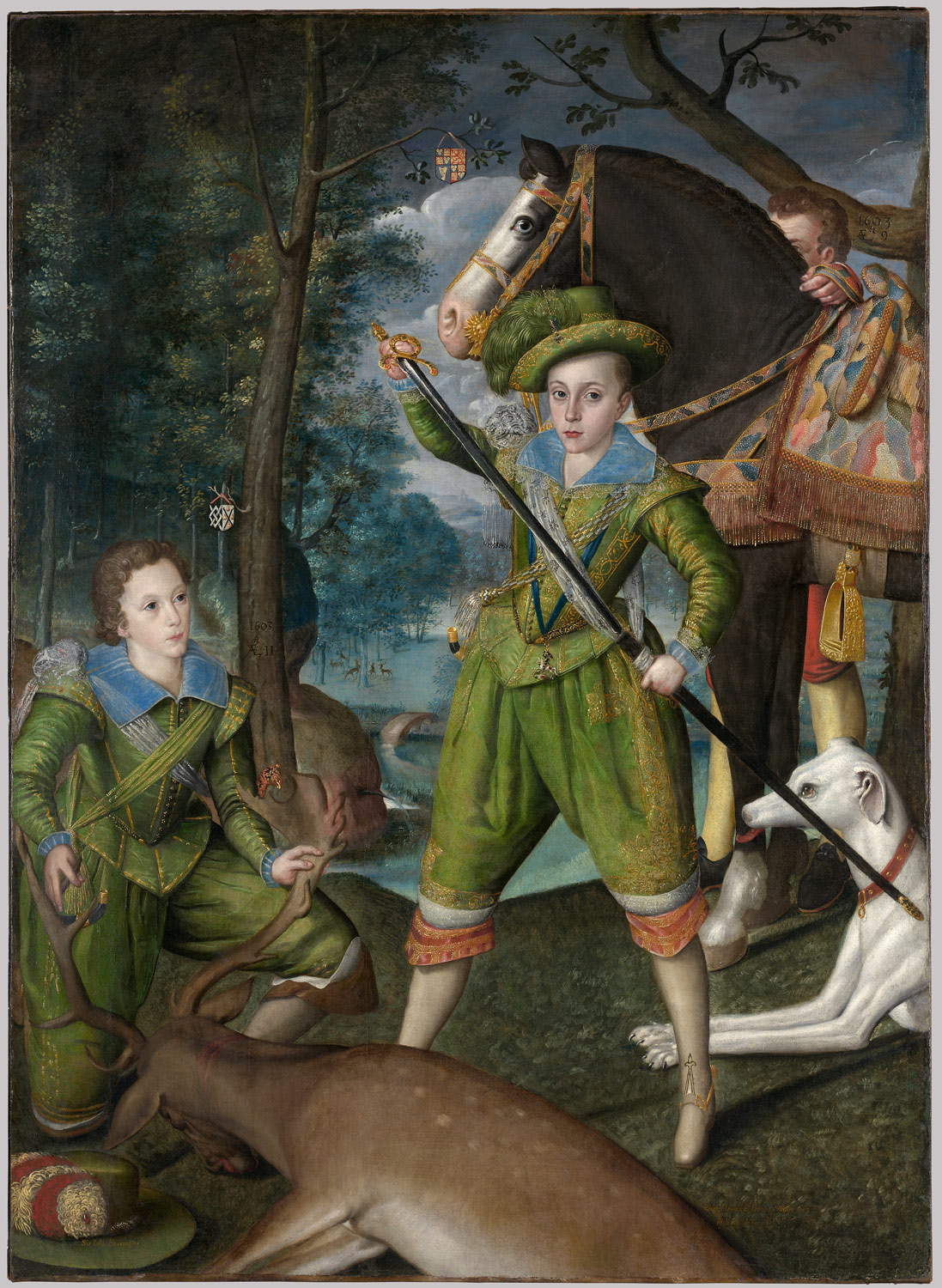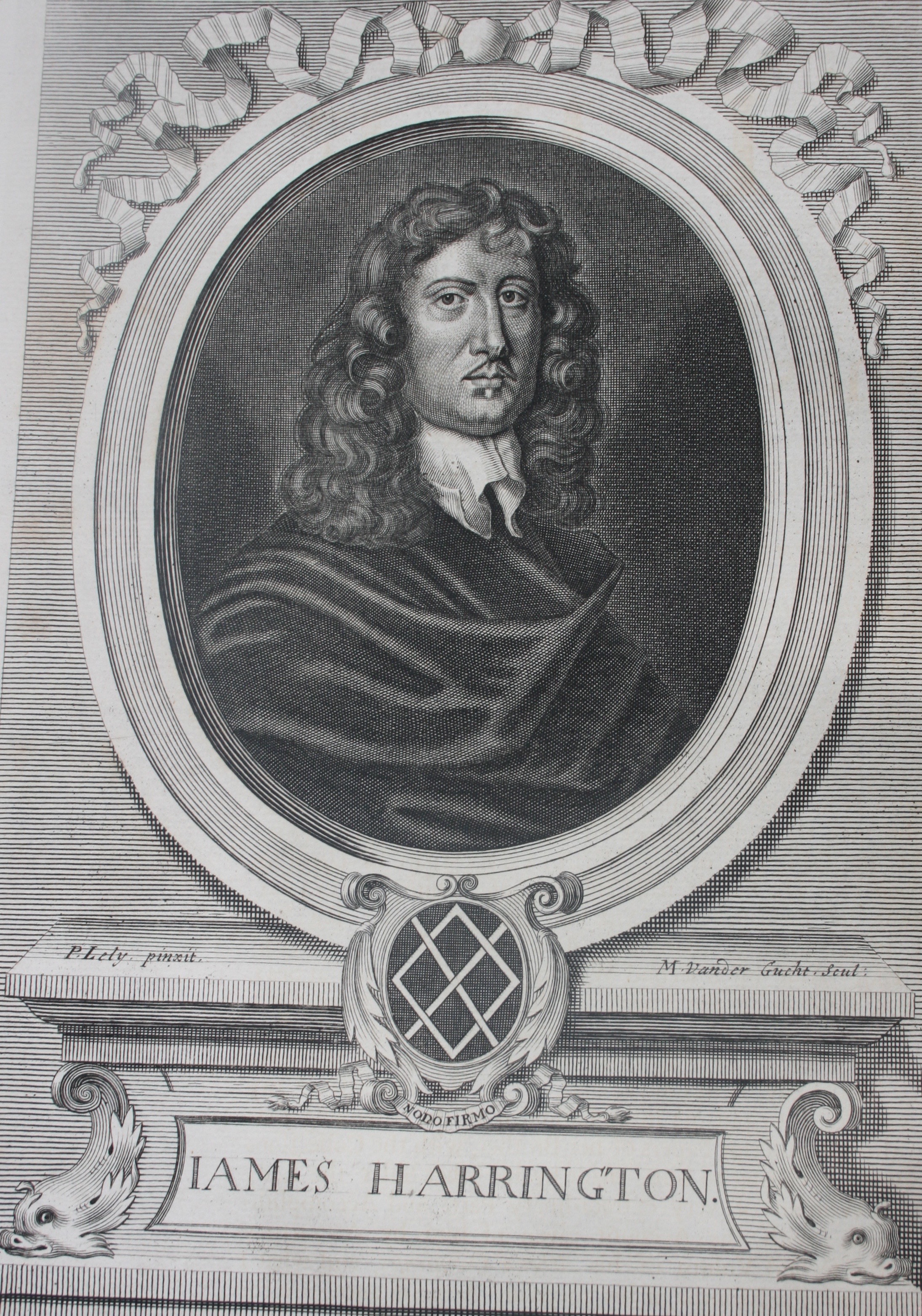One of my friends often sends a postcard of a painting as a New Year greeting. That plus the themes of hopes for the future and the fickleness of life made the subject of this post seem particularly appropriate for New Year's Day. I hope 2017 brings you health, happiness and much laughter.
Among the elite of seventeenth-century Europe commissioning and giving portraits could be an important means of demonstrating love and allegiance, building connections, and gaining favour on both a personal and a political level. Frequently in the correspondence of Elizabeth Stuart, Queen of Bohemia, we find references to portraits serving these purposes. For example, Elizabeth's husband, Frederick, commissioned portraits of each of his children, which he then took with him on his diplomatic and military travels. (The Correspondence of Elizabeth Stuart Queen of Bohemia, Volume I, 1603-1631, ed. N. Ackerman (Oxford: Oxford University Press, 2015))
As a child, the young Princess Elizabeth and her brother Prince Henry were themselves the subjects of an important pair of portraits by Robert Peake the elder, which were commissioned by her guardian Sir John Harrington of Exton in 1603 (the great uncle of James Harrington). Though now owned by different institutions, and situated on different continents, the two portraits were clearly intended to be read alongside each other. They are also a fruitful source of information about the relationship between the Harrington and Stuart families in the early seventeenth century, or perhaps more accurately about Sir John’s own perception of that relationship and his hopes for how it might develop.
Robert Peake, 'Princess Elizabeth (Elizabeth of Bohemia, "The Winter Queen", 1596-1662' (1603) @ National Maritime Museum, Greenwich, London. I am grateful to the National Maritime Museum for permission to reproduce this portrait here.
The portrait of Princess Elizabeth, which is now held at the National Maritime Museum in Greenwich, depicts her lavishly dressed and holding a fan. Her dress is white, suggesting purity, and is decorated with simple orange flowers which, along with Elizabeth’s jewellery, accentuate her red hair. The style and richness of the dress, and the emphasis on her hair colour, seem to point to the visual similarities between Elizabeth and her late godmother and namesake, Queen Elizabeth I, though art historians have also suggested that the depiction of her face in the painting resembles that of her father, James I. (N. Ackerman, 'Semper Eadem: Elizabeth Stuart and the Legacy of Queen Elizabeth I', in The Palatine Wedding of 1613: Protestant Alliance and Court Festival, ed. S, Smart and M. R. Wade (Wolfenbüttel, 2013), pp. 158-9. See also M. M. Meikle, 'Scottish Reactions to the Marriage of Lady Elizabeth, "first dochter of Scotland"' in the same volume, pp. 131-43). The parallel with Elizabeth I was commonly drawn both by the young princess herself and by those around her. It was perhaps particularly appealing for the Harringtons, who were known for their Protestant piety, since it helped to reinforce Princess Elizabeth's potential as a defender of Protestantism. Yet, while the colour, style and material of the dress all suggest a court setting, Elizabeth is actually depicted against the background of an English country estate - complete with trees, a river and various pathways and bridges. Within the landscape are several significant details. Behind Elizabeth’s right shoulder is a pergola housing two seated figures. These presumably represent her new guardians Sir John Harrington and his wife Anne, who are keeping a distant, but careful, eye on their new charge. We know that the portrait was painted in 1603, since that is the year inscribed on the bridge to her left. Moreover, it is also clear that the portrait was produced after August, when Princess Elizabeth turned seven, since this is the age indicated on the fan she is holding. Consequently it must have been painted around the time that Sir John and his wife became her guardians - they took on the role in October and Elizabeth moved into their house in December of that year. This strongly suggests that the portrait was produced to commemorate their appointment to that role.
Behind Elizabeth’s left shoulder is a hunting scene. Two riders - one on a white, the other on a brown horse - are depicted galloping through the landscape. Hunting was a particular passion of Elizabeth and her family, as her correspondence testifies. It also played a crucial role in forging the relationship between the Stuart and Harrington families in the first place. The account of James I’s journey from Edinburgh to London for his coronation as King of England refers to him staying several nights at one of Sir John’s houses in Rutland. A later commentator noted that the King ‘found excellent amusement in pursuing, with Sir John’s well-trained hounds' and commented that 'The monarch was, in fact, so much pleased with the good knight's attention, that he revisited his house a few days after'. (J. H. Wiffen, Historical Memoirs of the House of Russell: From the Times of the Norman Conquest, 2 Volumes (London: Longman, 1833), II, p. 68.) The hunting scene also provides a direct link to the companion portrait which depicts Elizabeth’s brother Prince Henry Frederick, heir to the throne, together with Sir John’s son John Harrington.
This second portrait is now held in the Metropolitan Museum of Art in New York. The background scene of the two paintings is very similar, and it seems likely that the hunting scene in the background of the portrait of Elizabeth actually features Prince Henry and his friend John. The orange palette of the servant’s clothes and the horse’s saddle can certainly be made out in the background to the painting of Elizabeth. However, this second portrait depicts a scene of triumph rather than mere ceremony. Though aged just 9 and 11 at the time, the two boys are depicted having just killed a deer. The prince is sheathing his sword having cut the beast’s neck, while Harrington is holding its antlers. Catharine MacLeod has emphasised the innovative quality of this work within English portraiture, not least due to this focus on a moment of action rather than stasis. (C. MacLeod, 'Portraits of a "most hopeful Prince"', in The Lost Prince: the Life and Death of Henry Stuart, ed. C. MacLeod with T. Wilks, M. Smuts and R. MacGibbon (London: National Portrait Gallery, 2012), p. 35.) Once again symbols within the painting hint towards its meaning. We know that the portrait was produced in the same year as the one of Elizabeth, since ‘1603’ is again inscribed in the painting, this time on the tree immediately behind John Harrington. Also hung on the tree are the shields of the two families. Their positioning, and that of the boys themselves, clearly demonstrates the superiority of the Stuarts and the subservience of the Harringtons to them, while at the same time emphasising the connections between the families. The shields are attached to the same tree (an indication of the kinship between the Stuarts and Harringtons via the Bruce line). However, the Stuart shield is hung high up in line with the clouds, while the Harington shield is hung on the other side of the tree much lower down firmly in the earthly realm. Similarly, Henry Frederick stands in the centre of the picture in a bold and confident pose, looking directly out at the viewer. John, by contrast is kneeling and he gazes in the direction of his friend. His hat is also removed, again implying subservience and obedience.
Robert Peake the Elder, 'Henry Frederick (1594-1612), Prince of Wales, with Sir John Harrington (1592-1614), in the Hunting Field' (1603), http://www.metmuseum.org/art/collection/search/437272. I am grateful to the New York Metropolitan Museum of Art for allowing me to reproduce this image in accordance with their Open Access for Scholarly Content Policy.
Sir John Harrington had as much reason to celebrate the friendship between his son and Prince Henry as he did his own appointment as guardian to the Prince’s sister, given the Prince’s status as heir to the throne. Sir John evidently had high hopes of what the friendship would mean for his son. Just a few years after the portraits were produced, he expressed his hope that his son would gain advantage from his friendship with the prince on account of ‘such towardly genius as he hath, even at these years’. (Letter from Sir John Harrington to his cousin, reproduced in Wiffen, Historical Memoirs, p. 82.) It certainly appeared as though John Harrington was becoming a trusted friend and agent of the Prince in the years that followed. In the summer of 1608 John set off on a Grand Tour. The Prince appears to have been directly involved in the arrangements, not least intervening with the King to secure John’s passport. It has even been suggested that John’s itinerary was ‘clearly intended to provide the prince with eyewitness reports of most of the potential diplomatic flash points of western Europe.’ (Simon Healy, 'Harrington, John, second Baron Harrington of Exton (b. 1592, d. 1614), courtier, Oxford Dictionary of National Biography (Oxford: Oxford University Press, 2004) [http://www.oxforddnb.com/view/article/12328, accessed 15 July 2016]) Harrington’s significance to the Prince was also noted by others. On his presentation to the Venetian Doge, the English ambassador to Venice, Sir Henry Wotton, commented that: ‘being the right eye of the Prince of Wales, this world holds that he will one day govern the kingdom’. (Quoted in Healy, 'Harrington, John, second Baron Harrington of Exton'.)
Sadly, Wotton’s prediction and Sir John’s hopes would never come to pass. Prince Henry died of typhoid fever in November 1612, scuppering all the plans. Moreover, both Sir John and his son were themselves dead within two years of Prince Henry’s demise. The father died in Germany in August 1613, having just accompanied the newly married Princess Elizabeth and her husband Frederick, Prince Elector Palatine, to their new home. The son died in February 1614, leaving the family with no male heirs. Consequently, far from being the earliest material remains of the long and fruitful relationship between the Harringtons and the Stuarts, Peake’s paintings are left as a hint of what might have been a very different future for the Harringtons, the Stuarts and - given Prince Henry’s popularity, and his rather different character from his younger brother, the future Charles I - perhaps even for England itself.




